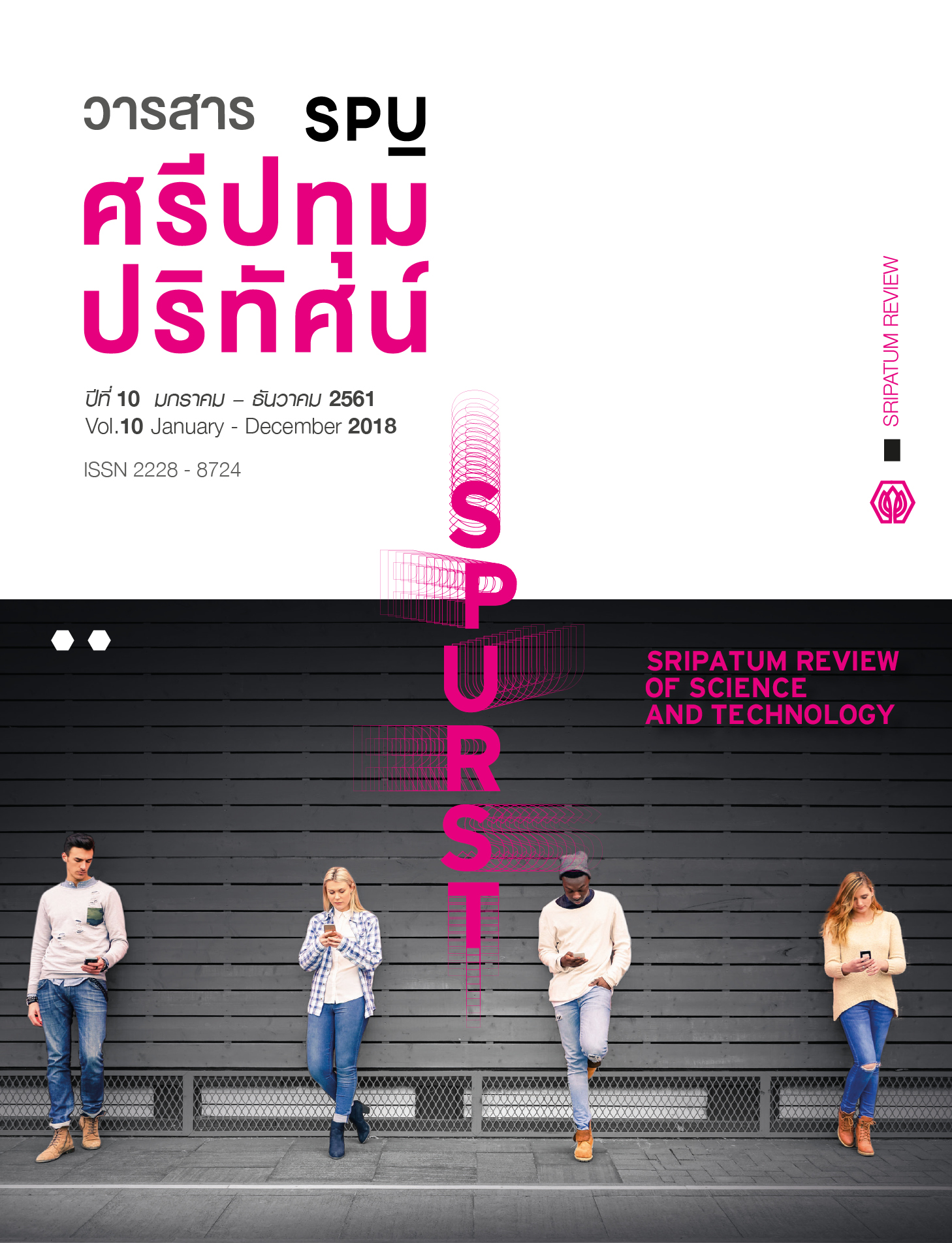Preparation of Rubber Composite for Fatigue Reduction from Natural Rubber and Coir Fiber
Main Article Content
Abstract
The purpose of this research was to study the preparation of rubber composite for fatigue reduction from natural rubber and coir fiber to be used as the raw material for production of low cost composite material for application in various works. In this research, coir fiber was immersed in 8% w/w of NaOH solution and then the coir fiber was prepared by mixing with natural rubber in the two roll mill mixing machine. The rubber composites were fabricated by compression molding at 160o C. Methods of this study were divided into 3 parts: Part I was the investigation of the amount of coir fiber affecting the mechanical properties of the composite rubber by using various amounts of coir fiber of 40, 60, 80 and 100 phr; Part II was the study of the amount of magnesium hydroxide flame retardants by varying the amounts of retardants of 30, 60, 90 and 120 phr; and Part III was the study of the thermal property of composite rubber via the use of thermal infrared camera. The results revealed that on the optimum condition for improving the surface of coconut fiber, it was found that the maximum surface improvement of coconut fiber with sodium hydroxide was 8 % w/w. FT-IR showed that Lignin, Hemicellulose and other impurities were removed by sodium hydroxide solution. As for the effect of coconut fiber on mechanical properties, it was found that the Modulus at 100% strain and hardness of composite rubber increased with increasing of fiber loading whereas the tensile strength and elongation at break decreased because coir fiber acted as a filler in a composite system. The study of the influence and amount of magnesium hydroxide showed that the addition of magnesium hydroxide could reduce flammability of composite rubber. However, the addition of magnesium hydroxide resulted in decreasing of mechanical properties. Testing of the rubber sheet fatigue with the thermal infrared camera revealed that the standing on the composite rubber could cause better blood circulation.
Article Details
References
Cross, M.S., Cuasack, P.A. and Hornsby, P.R. (2003). Effects of tin additives on the flammability and smoke emission characteristics of halogen-free ethylene- vinyl acetate copolymer. Polymer Degradation and Stability, 79, 309-318.
Dong-yun, et al, (2015). Atomistic simulation of defected magnesium hydroxide as flame retardants. Trans. Nonferrous Met. Soc. China, 25, 4080 – 4088.
Foundation for Older Persons' Development. (2015). Situations of Older Persons in Thailand. [Online]. Retrieved 20 June 2018, from: https://fopdev.or.th/สถานการณ์ผู้สูงอายุในประเทศไทย (in Thai)
Gu, H. (2009).Tensile behaviours of the coir fibre and related composites after NaOH treatment, Materials and Design, 30, 3931–3934.
Chaisupakitsin, M., Pitoonthud, T., Putthachartsombut, P. and Surerngrit, R. (2010). Properties of Fiberboard Made from Coconut Coir/Polystyrene Foam Containing Flame Retardant. Burapha Sci, J. 15, 2 , 57-66. (in Thai)
Mathew, L. and Joseph, R. (2007). Mechanical properties of short-isora-fiber-reinforced naturalrubber composites: Effects of fiber length, orientation, and loading; alkali treatment; and bonding agent. J. Appl. Polym. Sci, 103, 1640-1650.
Pantamanatsopa, P., Ariyawiriyanan W., Meekeaw T. Suthamyoung R., Arrub K., Hamada H. (2014). Effect of Modified Jute Fiber on Mechanical Properties of Green Rubber Composite. Energy Procedia, 56, 641-647.
Sain M., Park S.H., Suhara F. and Law S. (2004). Flame retardant and mechanical properties of natural fibre-PP composites containing magnesium hydroxide. Polymer Degradation and Stability, 83, 363-367.
Raghavendra S.,Lingaraju P., Balachandra Shetty, Mukunda PG. (2013). Mechanical Properties of Short Banana Fiber Reinforced Natural Rubber Composites.Science, Engineering and Technology, 2, 1652-1655.


